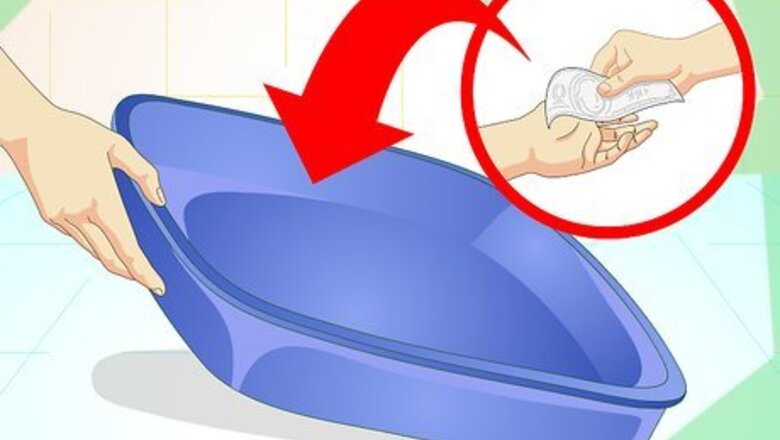
views
- Fill a large litter box or plastic tub with dog litter and place it in a spot easily accessible to your dog.
- Place your dog in the box and tell them “Use the box.” When they step out of the box, put them back in, say the command, and repeat until they understand.
- Feed your dog regularly and watch for signs that they need to go. When they look ready, use the “Use the box” command to send them to the box.
Setting Up the Litter Box
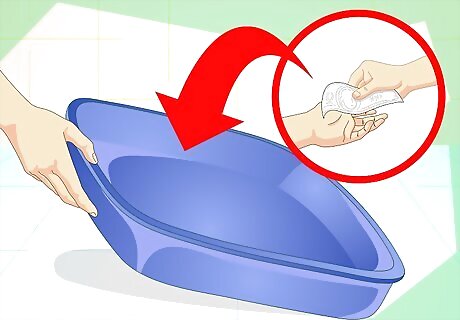
Purchase a large plastic tub to serve as a litter box. All you really need is something to hold the litter, though there are more expensive versions that offer a self-cleaning function or grass on top (with waste collecting in a lower pan). The box should be big enough for your dog to turn around in. The sides should be low enough that your dog can enter by himself, but high enough to stop your dog from peeing out of the box if he lifts his leg. If you buy a box with a hood, consider cutting the top off to make the box easier for your dog to use and for you to clean.
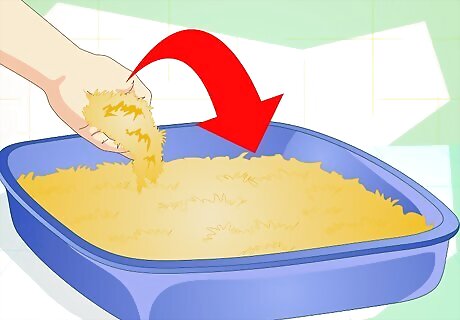
Get litter for the box. Dog litter works best because it has larger pellets that are more absorbent. Dog litter ranges from simple clay to those with activated charcoal to control odor. For your own odor control, simply sprinkle baking soda on the bottom of the box each time before you fill it.
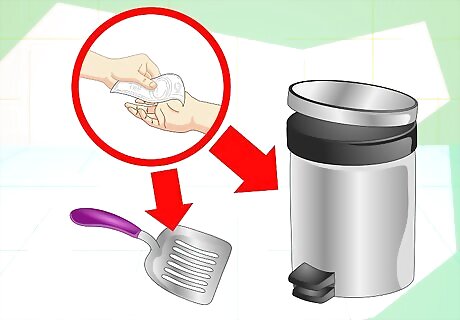
Buy a liter scoop and a “step-on” trashcan. You need to remove your dog’s waste every time he eliminates in the box, if possible. Having a scoop and trashcan nearby will make this much easier.
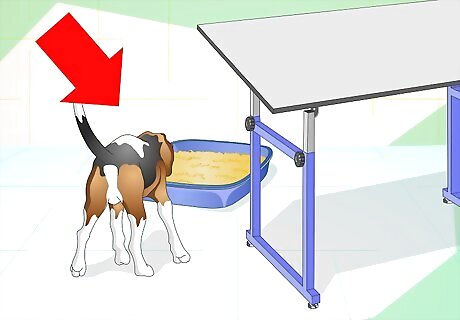
Put the box in a place that is easily accessed, but private. You want the box near the places your dog spends most of his time, but also out of the way enough that you’re not watching him. Don’t place the box near your dog’s food and water, as dogs will not eliminate where they eat. Be aware that dogs have a tendency to dig in their box, especially at first. Place it so that any litter thrown out during digging will not cause too much of a mess.
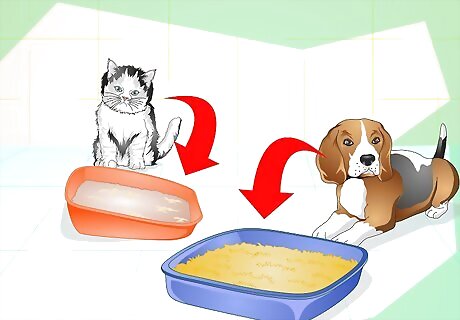
Make sure each cat and dog has its own box. Your cat needs to feel ownership of his box, or he will start peeing outside the box to mark his territory. And if you have two dogs, it’s best to get each of them their own box to avoid similar issues with territoriality.
Familiarizing Your Dog with the Box
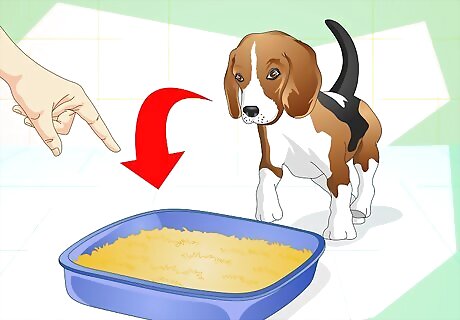
Teach your dog to go into the box on command first. Before your puppy or adult dog learns to eliminate in his litter box, he’ll need to be able to enter it on his own. You need to teach him that it is a safe, even fun space.
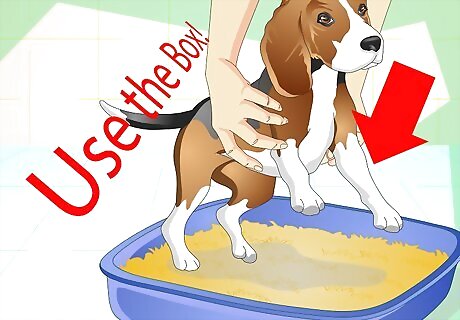
Place your dog in the box and give a command like “use the box”. Praise the dog for being in the box.
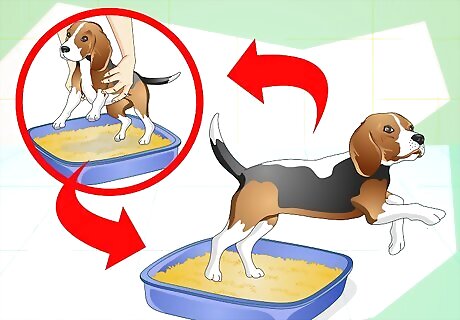
Wait for your dog to leave, and put him back in. Repeat your command, and again, praise your dog and act happy that he is in the box. Keep practicing until you are able to guide your dog into the box while giving the “use the box” command.
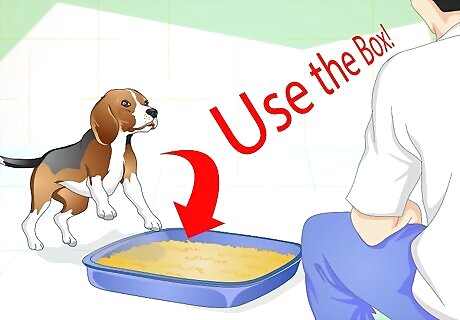
Have your dog enter the box with the “use the box” command alone. Once your dog is comfortable being guided into the box, try using only your verbal command. Be patient and don’t repeat yourself. If your dog does not get in, simply walk away and try again later, or go back to guiding. If your dog does get in on command, praise him profusely. Keep practicing until he gets in immediately on command.
Training Your Dog to Use the Box
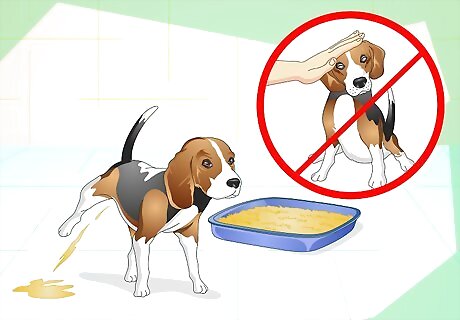
Be positive and consistent. Punishing your dog for peeing or pooping outside his litter box will only scare her and make it harder for him to learn. Consistency is the best way to train your dog.
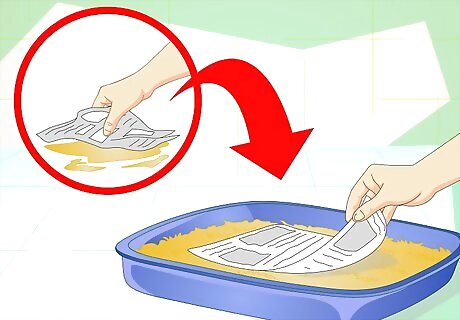
Soak some newspaper in urine or take some of your dog’s feces from outside and put it in the box. This will show your dog that it is ok to eliminate there and make him more likely to do so.
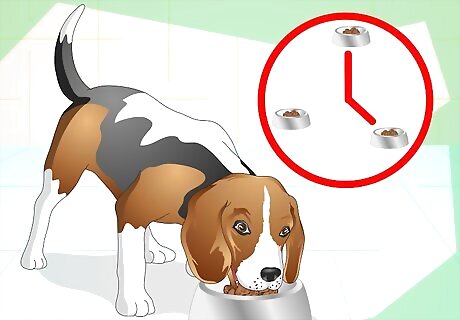
Feed your dog on a regular schedule. Remove the food between meals. Regular feedings will lead to regular times when your dog needs to eliminate.
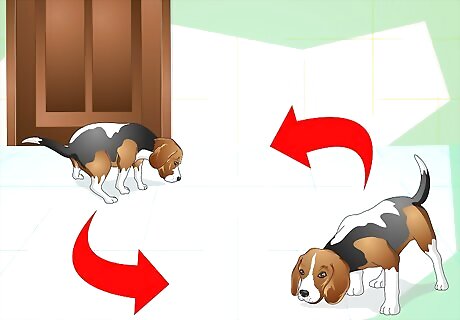
Watch for signs that your adult dog needs to eliminate. Whining, pacing, sniffing around the house, or walking to the door are all signs that your dog needs to pee or pooh. Send him to the litter box immediately.
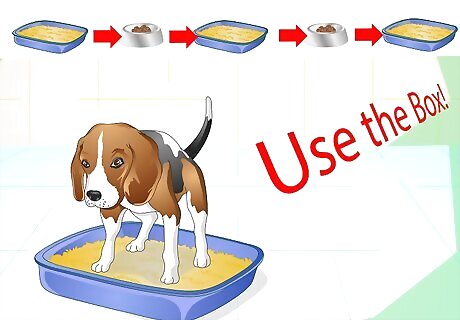
Send your puppy to the box with the “use the box” command on a consistent schedule to avoid accidents. Very young puppies should be sent every hour, as well as shortly after meals and naps. All puppies should be sent first thing in the morning, just before you go to bed, and before they are confined or left alone. A puppy can usually hold his pee for the same number of hours as his age in months during the day. Puppies can hold their pee longer at night. A 4 month old puppy should be able to make it through the night
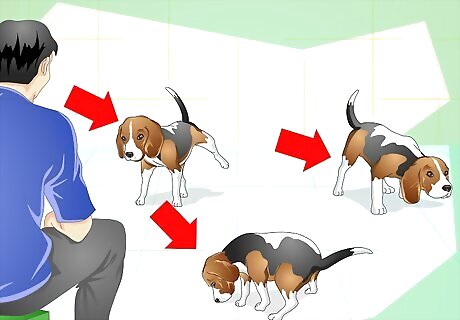
Keep a close eye on your dog to prevent accidents. You don’t want your dog to get in the habit of eliminating in the house, so whenever he is not confined, watch him closely. Pacing, whining, circling, sniffing, and leaving the room are all signs that your dog needs to pee or poop. Get him to the litter box as quickly as possible.
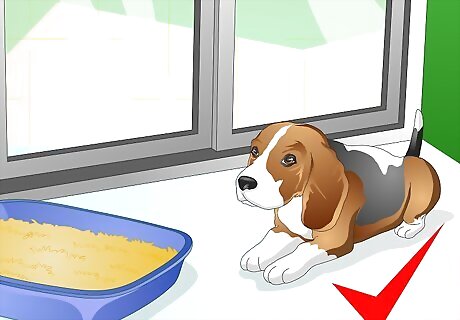
Confine your dog when you can’t watch him. Use a small room with the door closed or blocked off by a baby gate. Locate the litter box in the room so that your dog can use it as needed.
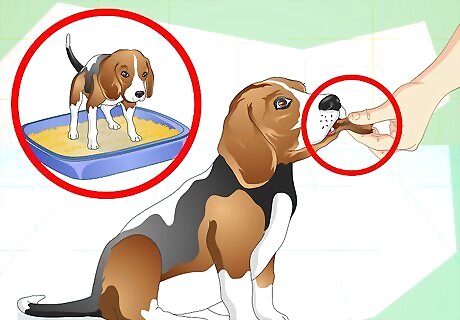
Reward your dog when he pees or poops in the litter box. During litter training, you should always go to the litter box with your dog. Reward peeing or pooping with praise, treats, or play.
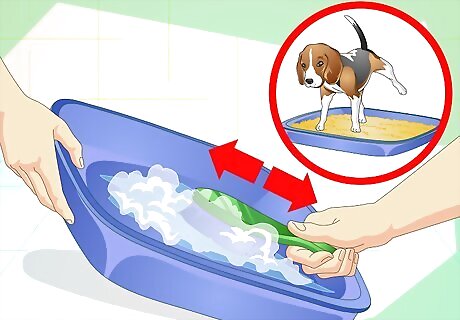
Clean the box every time your dog goes. Dogs don’t bury their waste like cats do. You’ll need to scoop it out every time they pooh. At least once a month, empty the box out entirely and clean it. Your dog won’t want to use it if it gets too dirty.
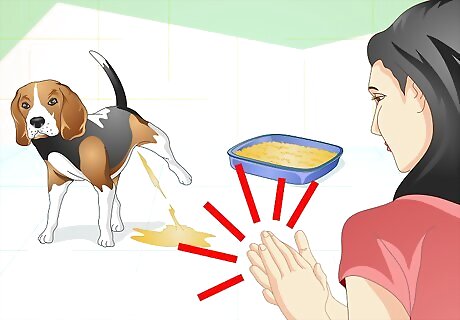
Stay calm if you catch your dog in the middle of an accident. You don’t want to scare your dog, and you definitely don’t want to rub his face in the mess. Clap sharply in order to startle him; this will usually cause him to stop. Then quickly run with him to the litter box, encouraging him to follow you. If your dog finishes peeing or pooping in the box, give a reward. If he has nothing left, don’t worry about it.










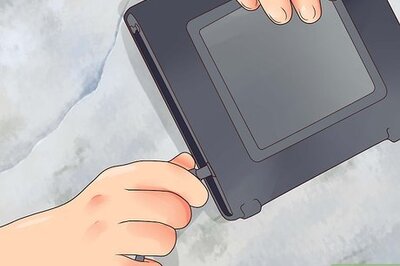

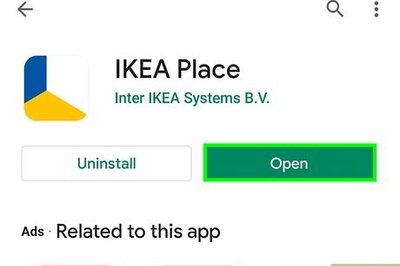
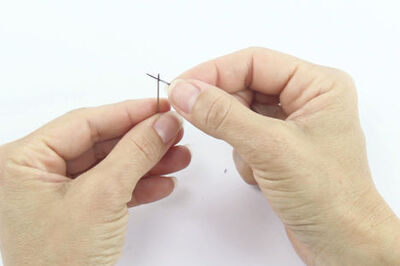

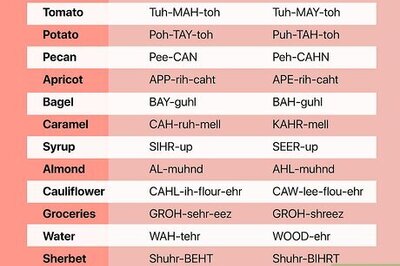

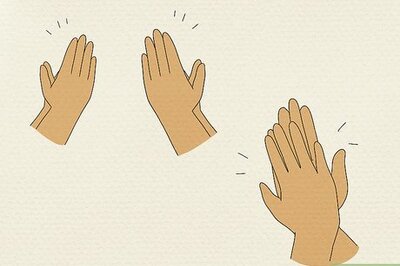

Comments
0 comment